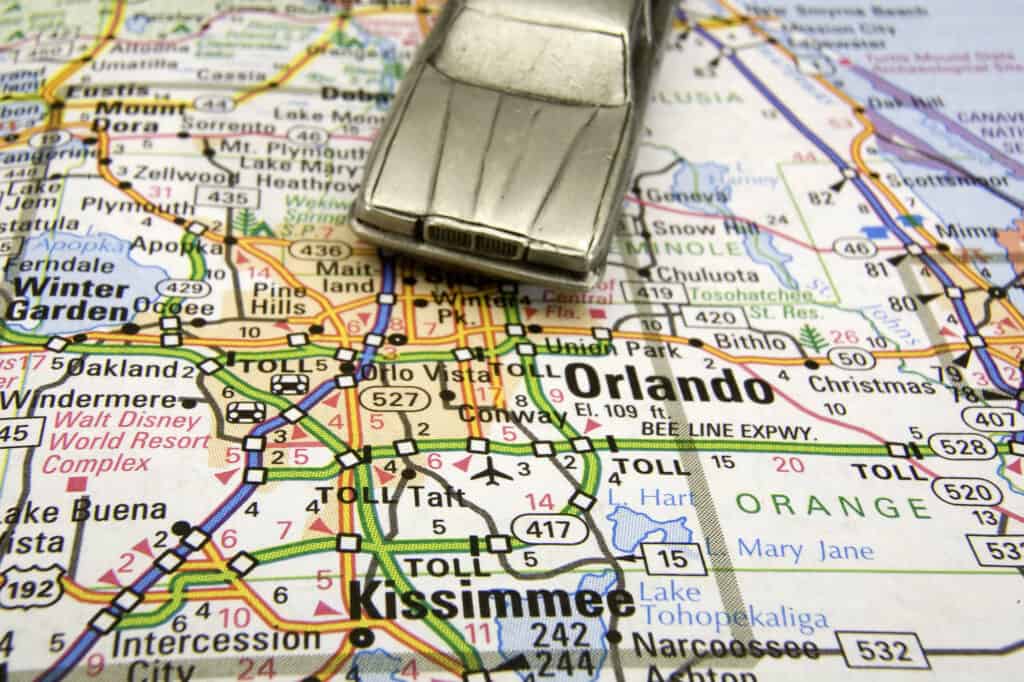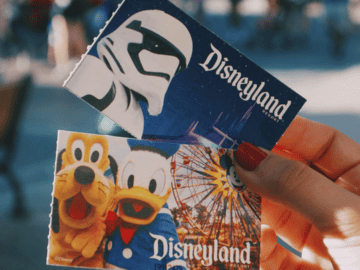While the sights, sounds, colors, and energy of a theme park may be exciting for many people, they can be overwhelming to people with autism spectrum disorder (ASD).
Particularly for children who may want to participate in family activities but have not yet learned the skills they need to regulate their emotions amidst stressful sensory experiences, it’s important to be prepared.
Preparation will help you ensure a safe, fun, and comfortable experience for everyone.
Planning and Preparing for Your Theme Park Visit

Planning a trip to a theme park is a lot of work in any case, and doing so with a child on the autism spectrum starts before you ever buy tickets.
However, planning vacations of any kind can be good for mental health and creating positive memories with the family, meaning it can be emotionally beneficial for everyone involved.
First and foremost, parents should consider all of the ways their child with ASD might experience sensory overwhelm, and plan for how to address those moments. These discussions should also include the child when appropriate, especially in regards to what to expect, what the plans are if they are feeling overwhelmed, and how to communicate those emotions.
From there, planning and preparation are essential to ensuring a safe, fun, and comfortable theme park experience for every member of the family.
Schedule Your Trip During Slow Seasons
Depending on which theme park you’re visiting, many may operate year-round while others close during cold seasons like winter and certain fall and spring months. Particularly in places where this is the case, you could attend the park during non-summer months and see fewer other guests, shorter lines, and overall less excitable energy leading to overstimulation.
On top of visiting during slow seasons when possible, you’ll find that the park is likely to have fewer guests on weekdays, early mornings, and evenings. Therefore, you’ll encounter fewer noises and sights, and less energy, with the added benefits of potentially saving money on overall trip costs.
Research the Available Accommodations
Many large theme parks offer special accommodations for people with disabilities, including people on the autism spectrum. Some of these accommodations include designated lodging, specially trained tour guides, as well as a means of moving through lines faster to avoid waiting in queues for hours at a time.
For example, Disney World parks offer accommodations such as:
- Stroller and wheelchair rentals.
- Special break areas.
- Dietary accommodations.
- Advanced ticket purchasing options.
Disney Cruise also offers accessible staterooms.
If for whatever reason, a park does not offer all of the accommodations needed for your child, you may consider budgeting for perks such as Lightning Lane passes at Disney Parks, which allow you to skip lines. In these cases, there may also be apps you can use to coordinate wait times, find food to eat nearby, as well as keep track of activities, such as with Disney’s Genie+.
Make a Plan and Daily Itinerary
You’ll find that planning ahead is just about as valuable as the actual resources themselves.
The more detailed your plans, the less likely you will find yourself in an awkward position of not knowing what to do if your child begins to feel overstimulated.
Taking all precautions and being proactive even to the point of over-planning will allow for room for positive family fun.
Coordinate Accessible Accommodations With the Park
Research available accommodations with the park you’re attending.
Next, ensure they received any requests and will be available to provide them as needed. Ensure you know exactly where to go and who to speak to the morning you arrive, so you do not have to spend hours searching the park for help with a child who would be more comfortable with accommodations from the start.
Prepare for Triggers
Considering the myriad possible triggers in a theme-park environment, parents should plan ahead and consider what their child is particularly sensitive to. From there, you can proactively prepare for any discomfort. Some of these preparations might include:
- Earplugs or headphones to control noise.
- Avoiding shows or rides with bright, flashing lights.
- Avoiding rides that may result in getting wet or otherwise splashed with water, as well as games and other similar water-related activities.
- Avoiding rides that may include jump-scares or narrow spaces, such as haunted houses or some walking tours.
While it is impossible to prepare for every possible trigger, especially in such frenetic environments, having tools on hand just in case can not only help parents feel at ease, but allow children with ASD to feel more comfortable as well.
Reassurance that there are earplugs, a change of clothes, sunglasses, and other tools at hand may help a child who is feeling overstimulated have the confidence to ask for help without worrying about repercussions.
Planning Breaks, Cool Downs, and Quiet Time
Some parks may have specially designated areas for quiet breaks, which are particularly important for children on the autism spectrum.
Even if your child appears to be handling the excitement of the park well, it’s good for everyone to take a few minutes away from all of the noise and excitement and re-center before heading back out again.
If there aren’t any designated quiet places within the park itself, review a map of the park ahead of time or take mental notes while exploring for other places you could return to. This could be a quiet spot in the food court, in the shade of a tree, or perhaps even outside of the park entirely if necessary. Reiterate this option to your child regularly, even if they are not showing signs of sensory overwhelm, so that they know there are safe places to go if they find themselves overstimulated.
Research Restaurants and Dining Options
On top of researching lodging and activities that are ASD-friendly, it’s also important to keep in mind restaurants and snacks, especially if your child has “safe” and “unsafe” foods they prefer. If they do, it doesn’t necessarily mean you can’t try new things as a family. It just means you should plan and be ready to prepare safe food to bring with you.
Further, use reservations to plan meals and other food stops into your itinerary. This way, you never worry about getting to a point where anyone in the family is grouchy from hunger, leaving you scrambling to find somewhere that can accommodate all food preferences or dietary restrictions.
Refer to a physical park map or even an interactive phone app for the park. You’ll be able to not only find nearby places to eat but also check out their menu options and pricing. You should also be able to get an idea of seating options and dietary options like gluten-free snacks, vegan-friendly choices, and other healthy choices. With that said, packing snacks from home is still a good idea to keep in mind. Even if you don’t end up needing them, you won’t want to be caught in a position where your child is uncomfortable and unable to eat with the rest of the family.
What To Bring to the Park
While packing a family for a theme-park vacation is never easy, there are additional needs to consider when the destination requires long travel to get there, is mostly located in the hot sun, and involves plenty of walking throughout the day. These considerations become even more nuanced when you’re traveling with a child on the autism spectrum.
Similar to considerations around food and snacks, be proactive about other comfort objects like toys, clothes, and shoes. This is important not only within the park itself, but also in ensuring your child is comfortable and feeling safe in unfamiliar places like the car, the bus, on an airplane, in and out of Ubers or Lyfts, or anywhere you’ll be sitting for long periods.
Other comfort tools to consider might include:
- Electronics with music, games, movies, or other activities already downloaded and usable offline.
- Noise-canceling headphones.
- Well-loved stuffed animals, blankets, or pillows.
- Weighted blankets.
- Spinner toys or fidget spinners.
- Anything part of a routine at home, such as certain snacks, certain books, or certain sounds/scents.
By bringing the comforts of home along for the trip, especially for children with ASD, you can turn new, unfamiliar places into safe experiences. You can also show that it’s perfectly acceptable to bring comfort objects when trying out something new or “scary.” Further, it will show your child that you want them to feel safe and comfortable, while also encouraging them out of their comfort zones to try new things. With that said, be careful not to pack too much, and try to maintain a level of minimalism to avoid losing any of these comfort objects.
Additional Words of Advice
It’s impossible to prepare for everything. But keeping in mind everything you can is essential to ensuring a happy, fun, and comfortable theme park experience for everyone in the family. On top of planning your itinerary with intention, ensuring your child has their comfort tools available, and researching park accommodations ahead of time, also consider some of the following:
- Always move at your child’s pace. Avoid pushing them too much and making them uncomfortable. Encourage trying new things, but do not try to force anything.
- Be flexible and adaptable. Keep an eye on your child’s mood and anticipate potential triggers before they happen or before your child feels overwhelmed. Communicate with them, and make sure they know their options when feeling overstimulated.
- Focus on the fun, positive memories, as well as accomplishments. While your child with ASD might need a little more attention than their siblings, be careful not to make the entire experience about them alone. This could not only stir frustration with siblings but also make your child with ASD feel picked on or singled out. Try to make all activities, comforts, and accommodations beneficial for all of your children so it doesn’t feel like they’re on different trips entirely.
Popular Parks That Offer ASD Accommodation
When it comes to finding the right park to attend, a good place to start includes those that offer myriad possible accommodations, not just for children on the autism spectrum, but also for many other disabilities.
Disney Theme Parks in the US
Disney hosts several quiet places for downtime and quiet breaks, as well as myriad accommodations for children with disabilities, including ASD. They also have a “Rider Swap” program, allowing family members to coordinate who goes on rides and who waits behind to take care of non-riding children. This applies for both Disney World and Disneyland.
- Services for Guests with Disabilities | Walt Disney World Resort.
- Walt Disney World Attraction Details for Guests with Cognitive Disabilities | PDF.
- Walt Disneyland Attraction Details for Guests with Cognitive Disabilities | PDF.
Universal Studios
Universal Studios offers a similar program to Rider Swap called “Child Swap,” though this program is only offered at select attractions rather than all of them. They also offer special passes that allow something similar to “reservations” for rides, where families can arrive at an attraction at the designated time rather than waiting in line for their turn.
- Accessibility Information | Universal Studios Hollywood.
- Accessibility Information | Universal Orlando Resort.
Legoland
Legoland Parks are International Board of Credentialing and Continuing Education Standards-certified, which means at least 80% of their staff have completed ASD-related training and also comply with many Americans with Disabilities Act requirements. Legoland also boasts a number of quiet rooms and other sensory-friendly accommodations.
- Legoland Florida | Guest with Disabilities Guide.
- Legoland New York | Guests with Disabilities Guide,
- Legoland California | Guests with Disabilities Resources.
Sesame Place
Sesame Place is the first theme park to be a Certified Autism Center, with at least 80% of staff trained in ASD-related needs and accommodations. They also provide special welcome procedures for families with children on the autism spectrum to ensure a positive first experience in the park.
- Ride Accessibility Program | Sesame Place.
- Autism Center – Activities & Theme Park Resources | Sesame Place.
Six Flags
Six Flags provides special accommodations in the form of park and ride passes, which allow for shorter wait times and separate entrances to rides to avoid the frenzy of waiting in queues for hours. They also host Autism Days, which provide a less-stimulating experience along with other park-wide accommodations.
Cedar Point
Cedar Point includes some “quiet zones,” as well as places to take breaks during the day and attractions that are less stimulating than traditional park rides.






Cynthia in San Diego
At Disneyland there’s no such thing as off peak days anymore. This Anaheim California theme park is full to the brim 365 days a year. As such it’s best to just mentally plan that it’s going to be difficult to get around the park when you’re jampacked in the middle of a shoulder to shoulder crowd. The only time when the park thins out a little is around dinner time when the people that were there all day 10 to start funneling out of the park. So just realize going in the park is going to be like this so you can mentally plan accordingly.
Adam Bryan
Couldn’t agree more